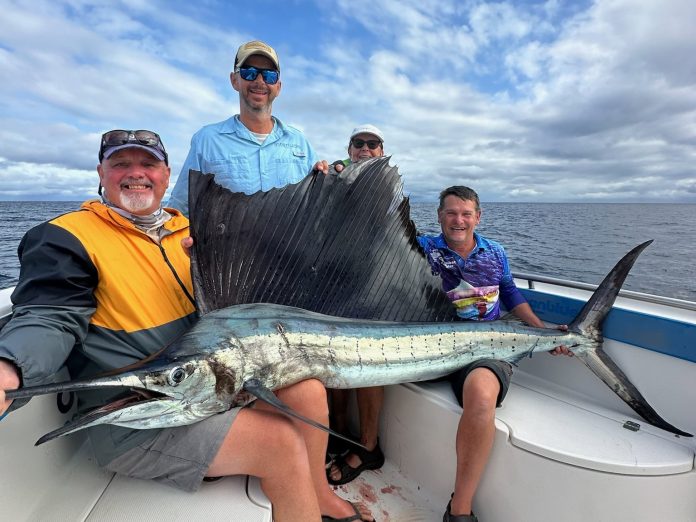Fishing with live bait is an epic way to target predatory fish, especially in the pelagic-rich waters around Vanuatu. The right choice of live bait can make all the difference, depending on your target species, location, and fishing conditions. Unlike artificial lures, live bait offers a natural presentation that predatory fish find irresistible, making it a great option to have when the fishing gets tough.
Why Fish Love Live Bait
One of the biggest advantages of live bait is its ability to move naturally in the water, mimicking the prey that predatory fish actively hunt. Lures attempt to imitate this, but no matter how realistic they look, they can’t perfectly replicate the erratic darting and struggling movements of a live fish, prawn, or squid. Additionally, live bait releases natural scent and enzymes into the water, which triggers a fish’s keen sense of smell—something lures simply can’t match.
Fish have evolved to recognise and hunt live prey. When a predator sees a distressed baitfish moving naturally, it triggers an instinctual reaction, making it far more likely to strike. Lures rely on visual appeal and angler manipulation to provoke a bite, but live bait taps directly into a fish’s survival instincts. When fish are finicky or inactive—perhaps due to changing water temperatures, barometric pressure shifts, or heavy fishing pressure—live baits can trigger a fish into a bite.
In these situations, fish may be less willing to chase artificial baits but are more likely to take an easy meal presented naturally in front of them.
Live bait is effective for a wide range of species, from reef dwellers like coral trout to fast-moving pelagics like marlin and tuna. The key is selecting the right bait for the target species—whether it’s live flying fish for sailfish, yellowtail mangru for dogtooth, or skipjack for marlin.
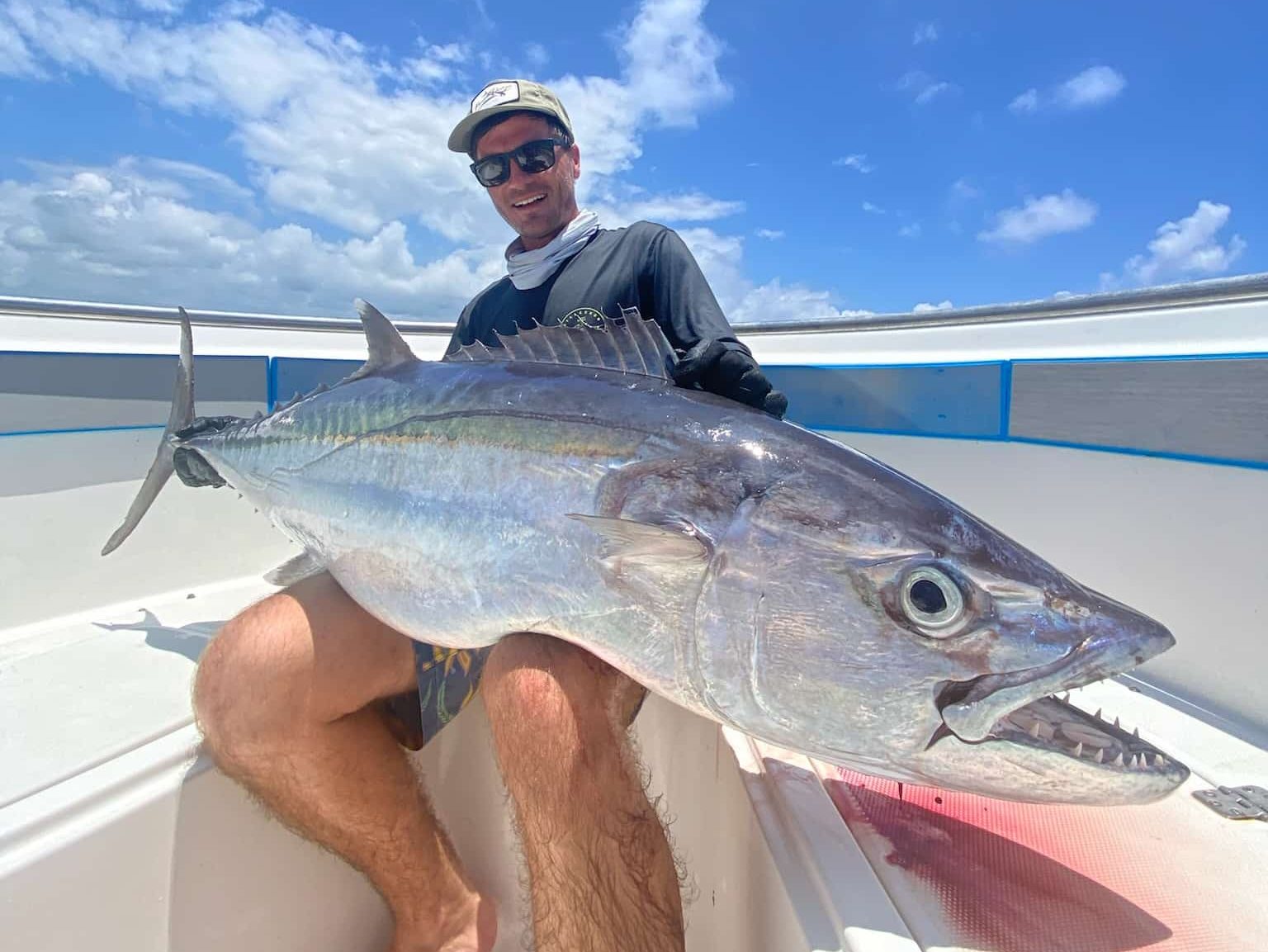
Popular Live Baits in Vanuatu
Yellowtail Scad (Mangru) – Mangru are small baitfish commonly found in estuaries, bays, and offshore reefs. They’re a go-to bait due to their abundance and hardiness.
- Appearance: Oval-shaped, slightly compressed body with a greenish-blue back and a distinctive yellow tail fin.
- Catching Method: Sabiki rigs, baited hooks with fish or squid, or using night lights to attract them.
- Pros: Abundant, hardy, great for kingfish and tuna.
- Cons: Can be outcompeted by other baitfish, sometimes too small for big game fishing.
Flying Fish (Exocoetidae) – The Best Bait for Vanuatu Flying fish are unique baitfish that can propel themselves out of the water to escape predators. They’re a prime bait in Vanuatu due to their abundance and effectiveness at attracting pelagic predators.
- Appearance: Long, slender body with a silver-blue sheen and large, wing-like pectoral fins.
- Catching Method: Night dip nets, trolling netting systems, or jumping hook traps.
- Pros: Natural prey for pelagic fish, high visibility, effective for marlin, wahoo, and tuna.
- Cons: Fragile, difficult to handle.
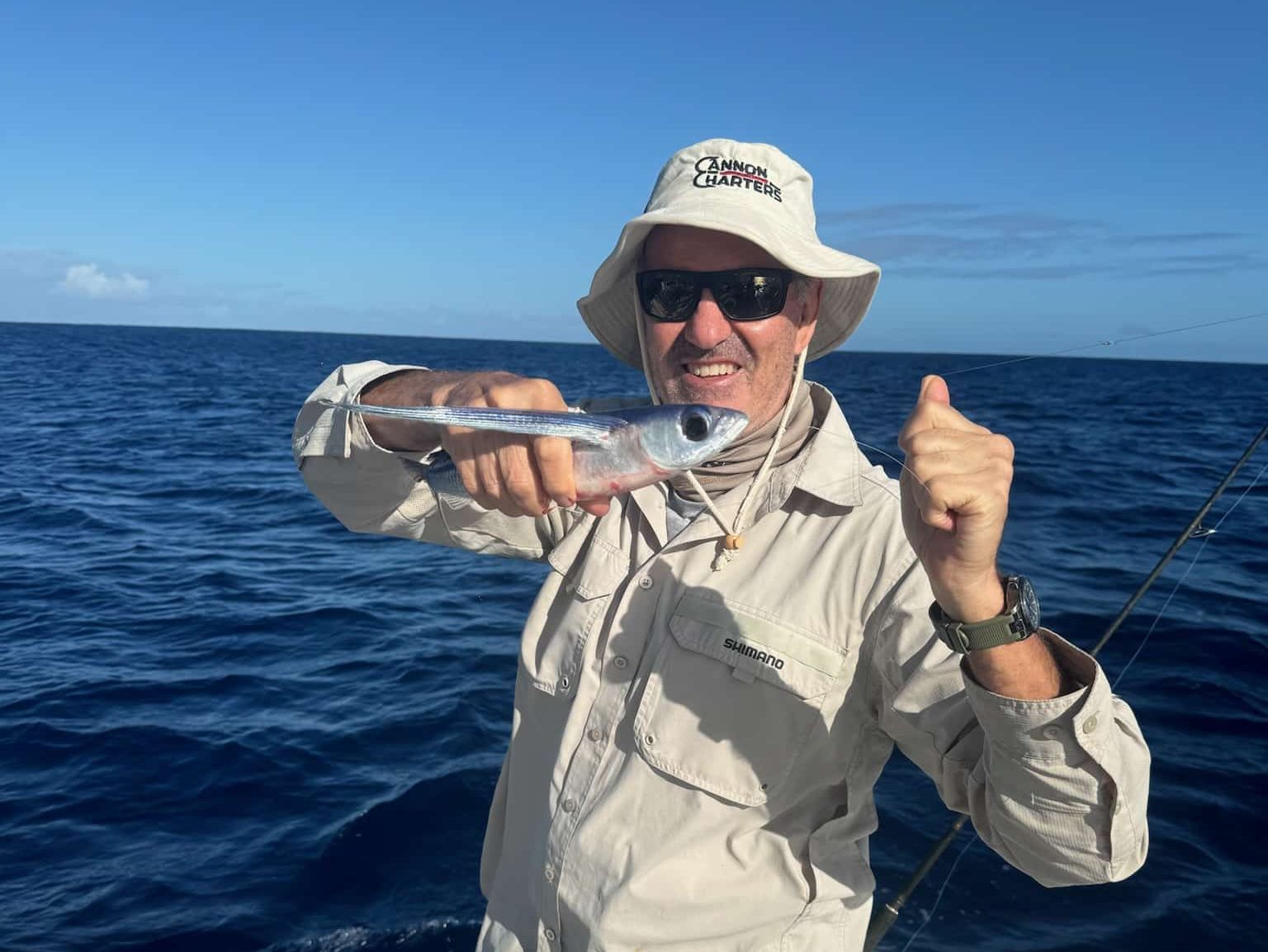
Pike (Sphyraena species) – Pike are long, slender fish known for their aggressive nature and strong scent, making them an excellent bait choice.
- Appearance: Long, torpedo-shaped body with a dark green or silver back and a sharp snout.
- Catching Method: Small lures, live baiting with small fish, or burleying with pilchards.
- Pros: Strong scent, sturdy as live bait, effective for kingfish and snapper.
- Cons: Sharp teeth require careful handling, not as abundant in some areas.
Skipjack Tuna (Katsuwonus pelamis) – Skipjack tuna are small, fast-swimming pelagic fish commonly found in tropical and subtropical oceans worldwide. They are a significant component of Vanuatu’s marine ecosystem and are highly valued both as a target species and as live bait.
- Appearance: Streamlined, torpedo-shaped body with dark purplish-blue back and a silver belly.
- Distinctive Markings: Four to six dark, horizontal stripes running along their sides.
- Catching Method: Trolling with small lures, casting small metal jigs, or chumming with fish scraps and oil.
- Pros: High oil content attracts predators, commonly found in Vanuatu.
- Cons: Large individuals can be difficult to use as live bait.
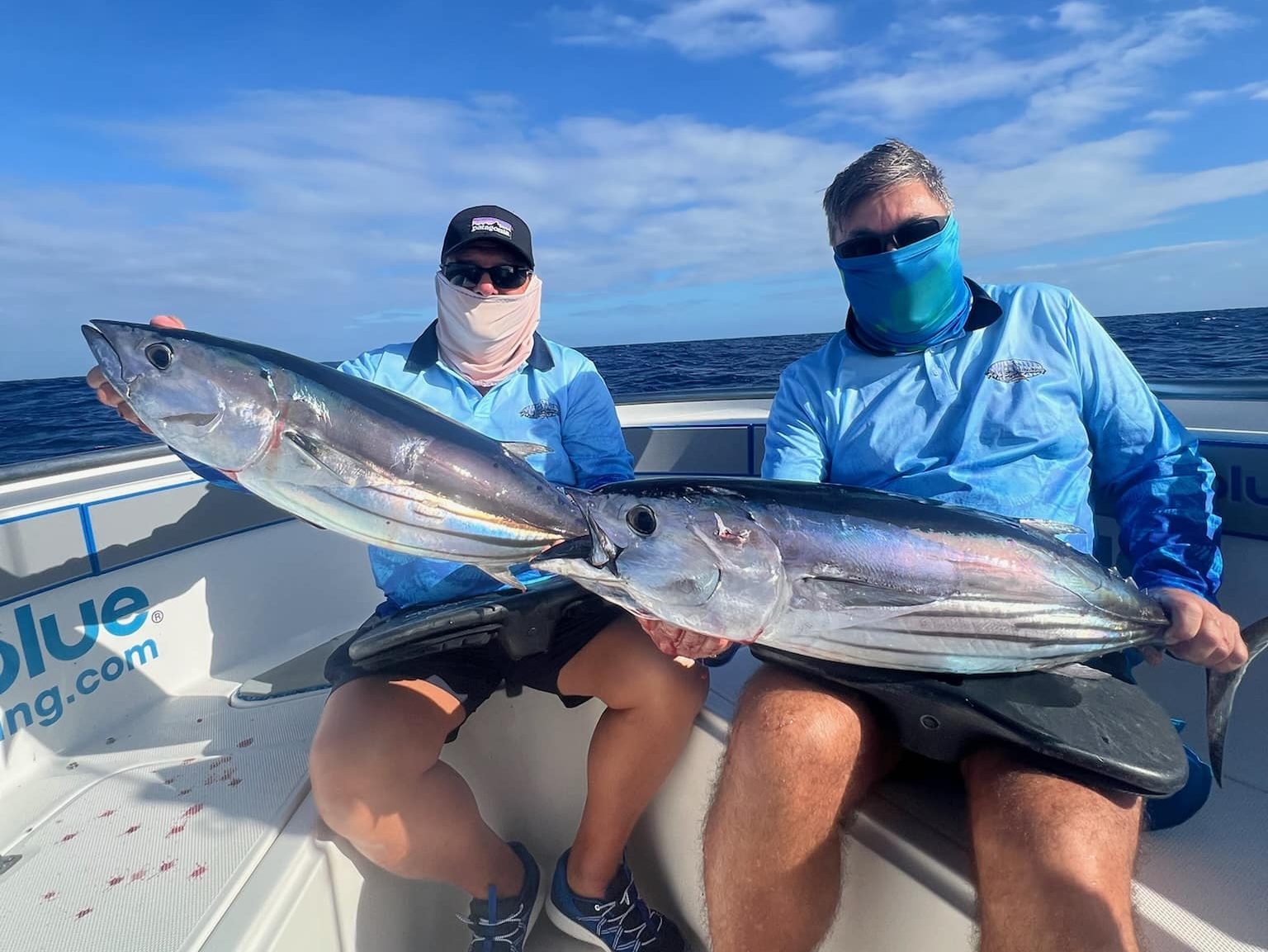
Rainbow Runner (Elagatis bipinnulata) – Rainbow runners are fast-swimming, schooling fish found in offshore tropical and subtropical waters. They are known for their vibrant colouration and are often found around floating debris or structures.
- Appearance: Elongated, streamlined body with bright blue to greenish hues.
- Distinctive Markings: Two narrow, light blue to yellow stripes along each side.
- Catching Method: Trolling small lures, live baiting, or casting small jigs near schools.
- Pros: Hardy in live wells, vibrant colours attract predators.
- Cons: Can compete with target species if not used promptly.
Mack Tuna (Euthynnus affinis) – Also known as little tunny or mackerel tuna, these fish are common in tropical and subtropical waters, including those around Vanuatu. They are known for their speed and agility.
- Appearance: Robust, streamlined body with a dark blue to greenish back and silvery belly.
- Distinctive Markings: Wavy, zigzagging lines on the back and dark spots near the fins.
- Catching Method: Trolling, casting jigs, or chumming.
- Pros: Vigorous swimming attracts predators, widely available.
- Cons: Can be difficult to keep alive without proper equipment.
Final Thoughts
Live bait fishing is one of the most exciting ways to target big fish, and Vanuatu offers some of the best conditions in the world for this technique. From mack tuna to flying fish, each bait has unique strengths. However, if you’re fishing in Vanuatu, flying fish is the premium choice due to its natural presence in the ecosystem and its irresistible appeal to wahoo, marlin, dogtooth tuna, GTs, and yellowfin tuna.
While lures have their place in modern fishing, live bait remains a tried-and-true method that consistently produces results. By using bait that looks, smells, and behaves like a fish’s natural prey, anglers significantly increase their chances of a successful day on the water. Whether you’re a seasoned angler or a beginner, incorporating live bait into your fishing strategy can make all the difference when it comes to landing that trophy catch.
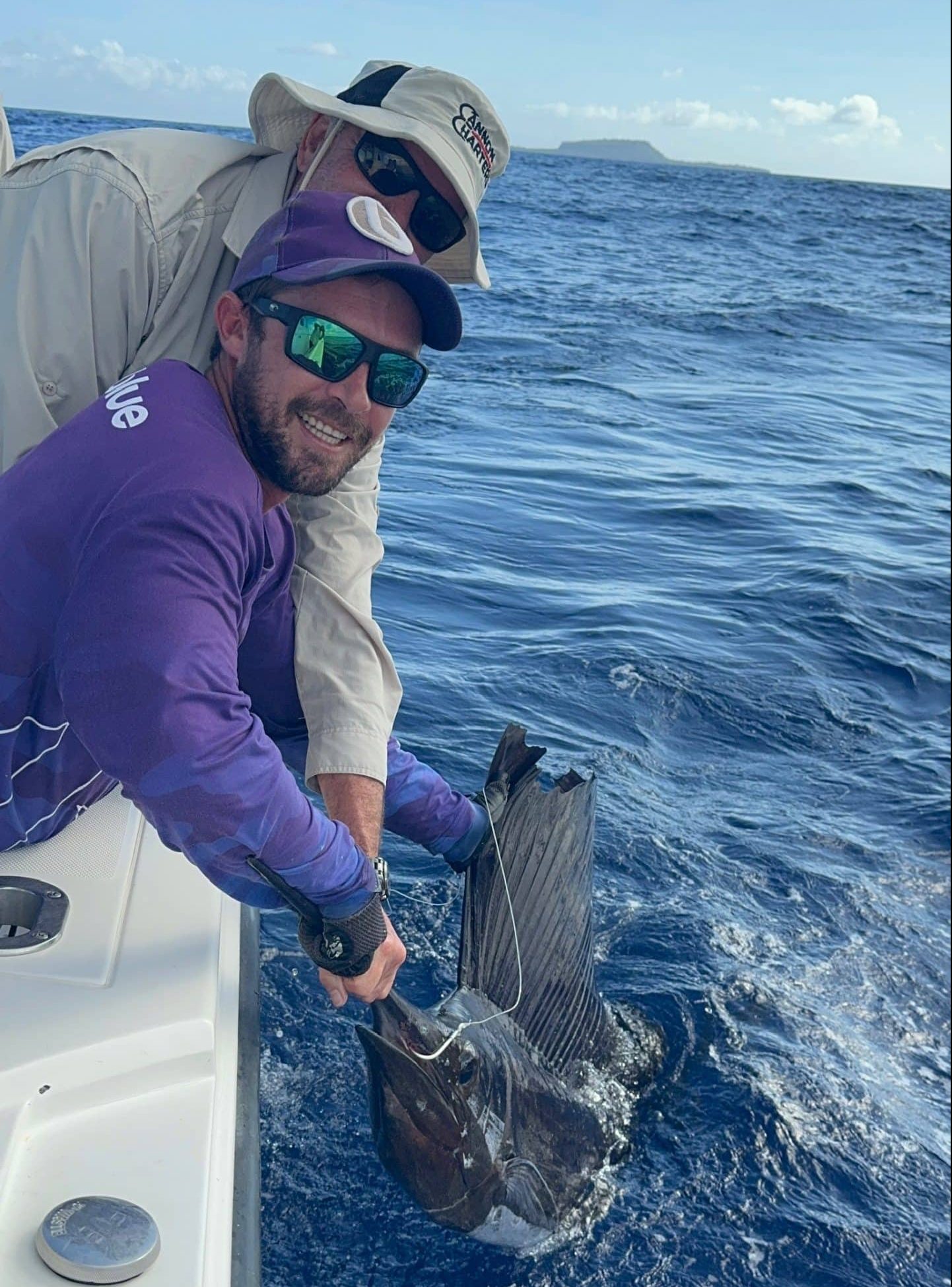
The best bait is the one that matches the appetite of the target predator. Often, that required understanding the diet of the fish at that point in time, and matching the hatch the best you can
Bleakers – Ocean Blue Fishing


